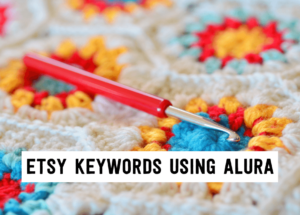
How to find the best Etsy keywords in 3 simple steps using Alura
If you want to be found in search results on Etsy, you need to optimize your product listing for SEO. And if you want to
join
join
What would I focus on to grow a successful handmade business this year?
I think it’s so important to look at this question each year, because the online world is constantly changing and you want to have a strategy that reflects the current conditions and trends in order to be the most successful.
So – today we’re going to answer the 2 questions I most often get asked
What should I do for my marketing? As in, what’s the best way to promote my products?
and
Where should I be selling my products? Etsy? Website? somewhere else?
I’ll tell you what I think and what I would do and of course and explain to you my thoughts behind all of this.
If you have a handmade business and are ready to take it to the next level OR if you are getting started but want to start on the right foot by focusing on what works RIGHT now, this is the video for you.
So, ready? Let’s dive in.
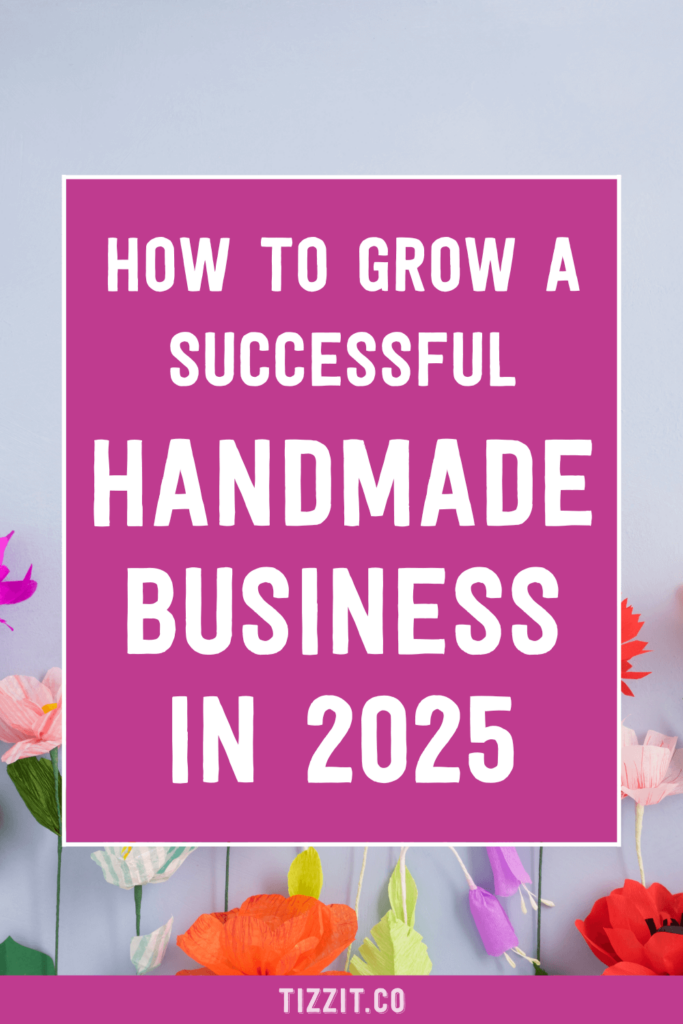
Now I’m not going to bore you in this article with details that I would recommend every year – always and forever – things that are always crucial to your success that are the same every year.
So things like:
All these things are important no matter what year we’re in!
I have articles on most of those topics so I won’t dive into details here.
What I’m going to concentrate on today is talking about things that can change from year to year and what I’m seeing based on the current trends in the marketing world.
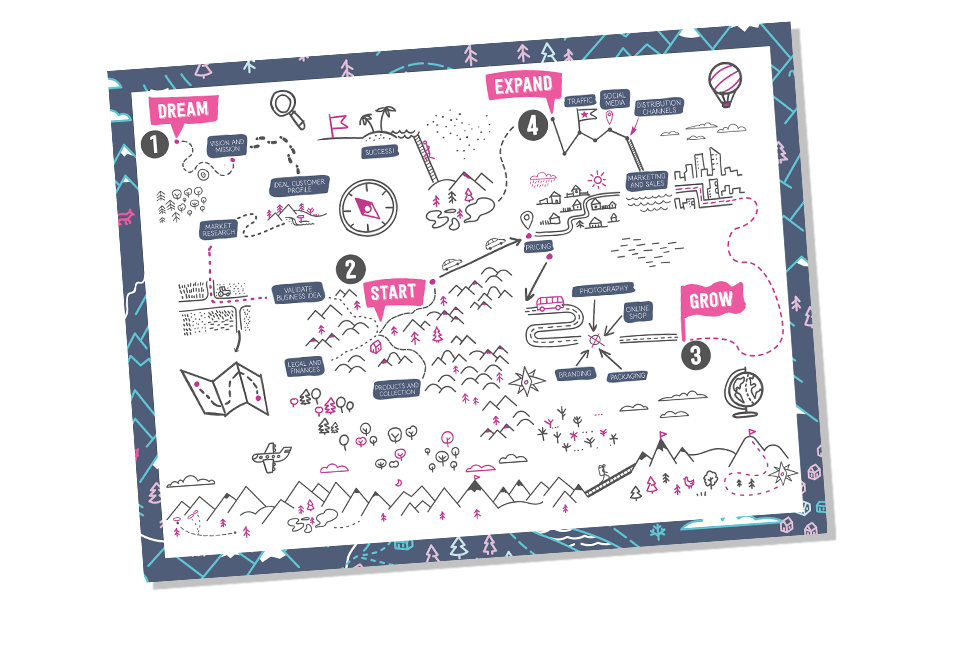
DOWNLOAD THE MAKERS ROADMAP!
Let’s start today’s article with my tips for marketing.
The first thing I want to talk about here is organic social media – so Facebook, Instagram, Pinterest, Tiktok – all of that.
Now obviously you’ll always have some kind of organic strategy inside of your social media strategy, because it’s free — so why wouldn’t you, right?
So here are my top tips for marketing your products:
First, you need to get really, really good at scroll-stopping, engaging content – you cannot do average! And that means you need to study it if you don’t know, in your niche and for your ideal customer, what makes them “love” it, what they relate to it, what they want to send to their friends, and what really makes them stop scrolling.
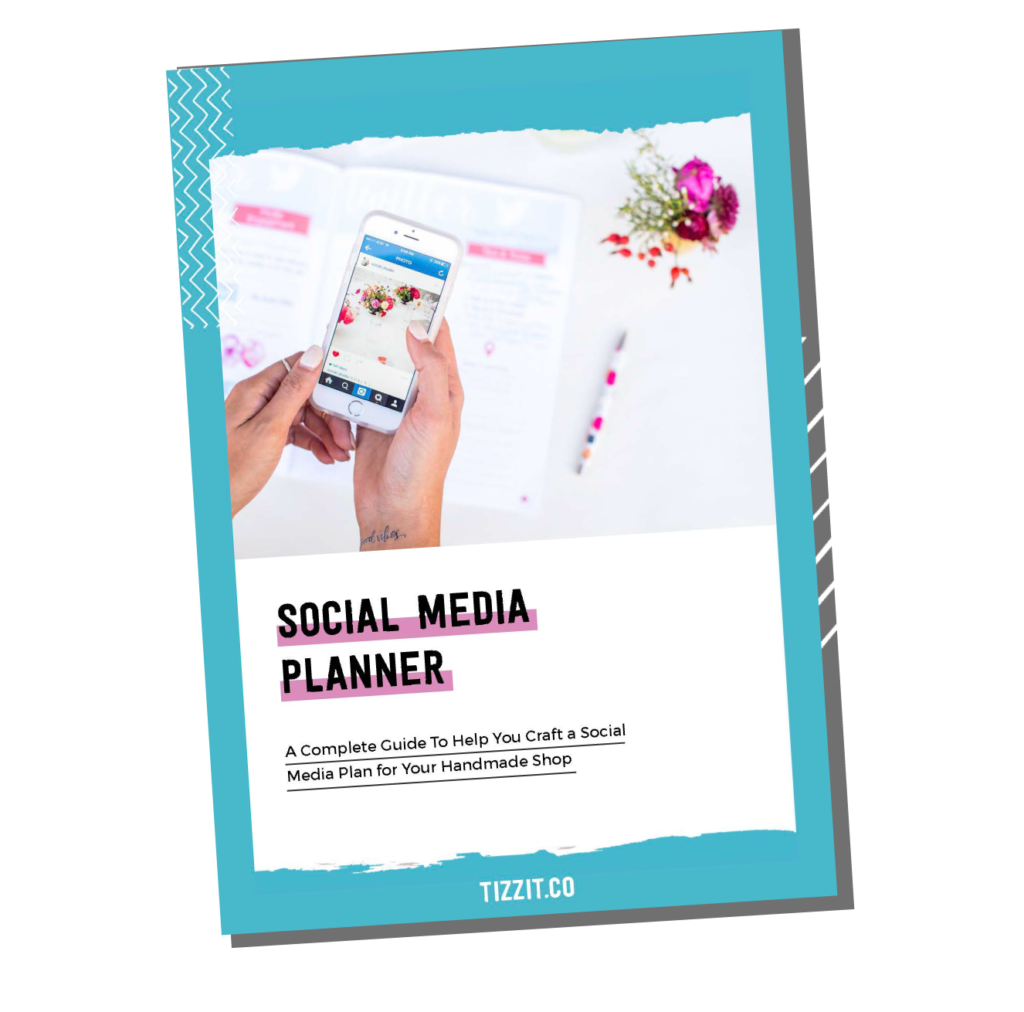
THIS FREE PLANNER WILL HELP YOU CREATE A SOCIAL MEDIA PLAN FOR YOUR HANDMADE SHOP. KNOW WHAT TO POST, WHEN TO POST IT, AND WHAT TOOLS TO USE!
To study this, you need to spend time on this platform figuring out what’s engaging, what people like . . . you need to really dive deep into this. If you don’t, you’re pretty much wasting time because you’re creating content that’s not going to be seen or engaged with, so you might as well not create it in the first place.
I’d rather you do a little less, but do consistently better quality content.
Now, with that said, I actually think that you can spend the same amount of time on higher quality content by using tools like ChatGPT. I’ve got an article about this that shows examples of things like how to create an Instagram campaign, how to create pin titles and descriptions, and other things like that.
The beauty of using ChatGPT is that before it existed it took you three hours to write content that was good enough, but not perfect. But after spending three hours on that, that’s really all you could do because at that point your human brain was fried and you ran out of time for the task anyway. And so you had to say “that’s good enough, I’ll just send that, I’ll just post that”.
But now, you can get to good enough in 10 or 20 minutes with something like GPT – maybe 30 minutes tops. And then you can spend the next two hours making it really freaking fantastic by adding your storytelling, by adding everything that you know about your niche to make “good enough” content into AMAZING content.
So use AI tools to essentially increase the quality of your output in the same amount of time that you’re currently spending to write average output because A) why wouldn’t you!, and b) because other people, your competitors, are doing this.
Next let’s talk about the second part of creating scroll-stopping content, which is USE VIDEOS!
I’ve been saying that for years now, and in all seriousness it just isn’t even funny anymore if you’re not doing videos for your social media — if you don’t have a video strategy inside of your business, get one!!
If you don’t want to be on camera you don’t need to. There are many, many, many ways you can do a video strategy for physical products without being on camera.
But you need to have a strategy in place; you need to know how you’re going to be using videos on social media for your products.
I know you may think photos are fine – and they ARE fine and necessary – but videos are SO much better and VERY important. It’s again about stopping the scroll, making sure you grab people’s attention – and currently what people consume and are used to are videos.
If you don’t know how to do this, study it and learn – spend time thinking through how you can create videos for your brand and products.
Now that we’ve talked about organic social media and what I would do for that, we need to talk about the problem I’m seeing with organic at the moment so that I can explain to you how I would get around it.
The trend we’re seeing with organic right now is declining organic reach rates.
A study done by Social Insider determined that the Average Reach Rate for Facebook and Instagram is 9.3%, and the Average Engagement Rate by Reach is 4.2%.
Let’s look at an example to help understand this:
Let’s say that you have 1000 Instagram followers. The 9.3% Average Reach Rate means that on average, only 93 people out of your 1000 followers would actually SEE a post that you’re posting, so not all that many.
Now we have to figure out how many of those 93 people are actually going to ENGAGE with your post, and for that we use the Average Engagement Rate by Reach, which is the percentage of those 93 viewers who actually ENGAGE with your post.
Now based on Social Insider if you remember, the Average Engagement Rate by Reach is 4.2%, so 4.2% of 93 is 3.9 — which means that about 4 people of your 1000 followers will engage with your post.
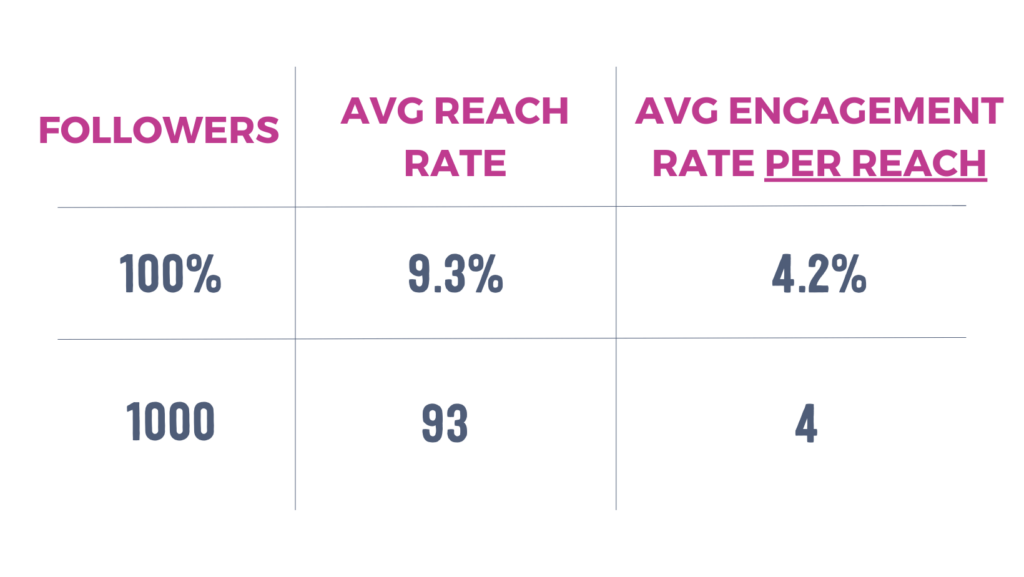
So this is a very sobering statistic that shows it will be really hard to organically generate income and drive enough traffic to your website or store.
I’m not trying to scare you with those numbers. But I am trying to highlight the fact that although organic works, it can be really slow. Typically, it’s free. So that means you’re paying with time not with money.
It’s always this, you know, you either have time or you have money to invest. So yes, it can work. But
The reason I want to share this with you is again, not to scare you, but so that we can have an honest conversation regarding your expectations . . . because I’m seeing a lot of people give up on organic too early from having unrealistic expectations of what could happen organically. They see the lack of results as “this is not working” when in reality it is just slowly working.
So… I would obviously always have a baseline organic strategy, as I mentioned, but I would keep in mind the fact that this is not enough, and that there is an opportunity cost to having an organic-only marketing strategy.
And because of that I would recommend two other things that you can do to get results faster, which are to partner with people who already have audiences … and paid ads.
For partnerships, this is mostly working with influencers. You don’t need to be a big brand to partner with influencers — you can work with micro influencers. This is a really great way to put your brands and products in front of already existing audiences, so I would definitely look into that as part of my marketing strategy.
I also recommend paid social ads, because as we talked about organic reach is very low and paid ads can really help you get that reach number back up.
Another problem with organic reach is that it’s nearly impossible to have the right post shown to the right person at the right time for that person.
So if someone has just started following you, and the first post that they’re seeing from your organic strategy is a little bit promotional, like “click the link in my bio to buy my product,” they’re probably not primed, not ready — they’ve just discovered you and they’re not ready yet to go for that purchase.
What would work better for them would be showing them your more engaging content, getting them to know and trust and like your brand first before you show them posts that are a bit more promotional and a bit more salesy, like “click to purchase”-type posts.
With paid ads, you completely control what kind of posts to show to people who have never engaged with you, or what to show people who have engaged with you but haven’t bought anything from you.
And you can create a funnel that takes people step by step to your checkout and beyond..
So you are paying to literally put your post in front of people — and not just any people but the RIGHT people, because paid ads give you the opportunity to target the right audience with the right message at the right time.
Budget-wise, because I know you’re wondering “how much do I need Deb?”, I would say you can start with $5 to $10 a day, that’s the bare minimum. And then scale from there into full campaigns when your budget increases because sales are actually coming in.
Now I know that a lot of people think “well, I don’t have the money for ads.” And that’s fine, I’m not here to tell you to do ads if you don’t want to. I’m here to tell you, though, that it is just going to take a lot longer if you don’t put money behind them because of the organic reach problem we’re seeing these days.
So you can invest time instead, but just be aware of the fact that time is what you’re investing and so you need to be realistic with your expectations.
In a sense it’s kind of a mindset issue. Many makers that I work with are nervous to invest in ads – it can be a big financial step and it may feel scary. But you have to ask yourself, if I won’t invest money in my product, then who will? And if it’s fear that is holding you back, you may simply need to shift your mindset and see this as an investment in your business, just like you invested in product supplies and website creation and the like.
Shifting your mindset of how you view advertising expenses can help remove the fear and help you see this expenditure as one that will pay itself back, and then some!
So to sum up:
1. You still absolutely need an organic marketing strategy because this is how your efforts working with influencers or paid ads on the side or down the track will actually give you better results.
If you want to work with influencers, they’re going to look at your profile and they need to see what you’ve been posting organically on your feed — the vibe, the look, and the aesthetics — so you need that organic feed to introduce yourself to people you want to work with.
The same goes for paid ads: when you’re running paid content, people will see your ads and visit your profile, so you need to have organic content there to draw them in and make them want to learn more.
So you DO need to have an organic marketing strategy — plus it’s free so why wouldn’t you do it? You just want to have a plan that makes your content efficient and effective.
2. For effective organic content you need to focus on two things:
3. I recommend you begin paid ads and/or working with influencers sooner! Layering in influencers and paid ads will help you get past the reach problem that we’re seeing with organic social and get results faster.
Now that we have talked about marketing let’s look at the other part of the equation, which is where should you sell your products?
There are two big options here, Etsy or your own website. What would I choose?
Now, being completely honest, for how things are right now in the industry, if I were starting a business this year I would concentrate on selling on my own website with a side-serve of Etsy. I’ll explain exactly what I mean by that and why in a second but because I know some of you will ask: for the website platform, if you want me to be even more specific, I would go with Shopify.
Don’t get me wrong, — if you’re not on Shopify you can make any platform work, and WordPress comes as a close second. But if you’re wanting me to name one platform that I would pick if I was starting a business today I would pick Shopify.
Now – how would it work?
I would drive all the traffic that I am generating from organic social strategies, paid social ads, and partnerships/influencers to my website, and then I would use Etsy as an “add-on” channel, not as my main platform.
So I would use Etsy to tap into the existing audience on there, so on Etsy I would focus on organic SEO, and potentially Etsy ads as well — but I would not be sending any traffic, for example, from social media to my Etsy store – I would concentrate on sending that traffic to my website.
Now I know some of you may be saying “WHOAAAA, are you saying that you can’t be successful on Etsy alone?” No, I am absolutely not saying that but I am saying that you’re giving yourself more options for growth if you have your own website.
There are four main reasons that I’m seeing for that this year, and I’ve done an article about this, but here’s the short version:
Etsy’s conversion optimization is made so that people shopping on Etsy buy something from ANY Etsy store — they design the customer experience at the marketplace level, not at the shop level.
Once you bring in traffic to your own website, customers go on your product pages, your homepage, your category pages — and you get to decide the products that are recommended at each step along the way.
When you want people to spend more with each order this is called increasing your Average Order Value – so you use things like upsells, discounts, and bundles to encourage each customer to spend more.
Now of course on Etsy you’re going to find ways to do this, but you won’t have the ability to implement it as properly as you could on your own website.
This is a game changer – bumping up your average order value is very, very important if you want to scale your business, and Etsy really does make this difficult.
When you make a sale on Etsy, that person becomes an ETSY customer. Etsy doesn’t give you their email, and it’s very hard for you to target that customer to make future sales.
When you have your own website, it’s not only easier to grow your email list, but once you have your list, it’s also much easier to convert those people into customers time and time again.
Etsy SEO helps you get traffic. . . but there are A LOT of shoppers on Etsy so you can’t rely on SEO alone to bring traffic to your store.
If you run paid ads that bring traffic to your Etsy shop, you are at risk of losing that traffic because they can easily click away to any other Etsy store once you’ve done the hard work of bringing them to yours.
Paid traffic when you have your own website is a whole different ball game.
Now every ad you pay for is customized and targets or retargets the exact customers who will want to buy your products, and when those people click on your ad they will be taken to YOUR website and only see YOUR products. Much better!
There are other reasons that I would strongly focus on having my own website.
First, Etsy’s focus has broadened beyond handmade.
I think that it’s been a while since Etsy has been what we could call a “handmade platform.” They don’t even really try and hide that; they accept handmade but it’s not how they are necessarily positioning their brand anymore.
If you look on the Etsy website it says “Etsy is the global marketplace for unique and creative goods. It’s home to a universe of special, extraordinary items, from unique handcrafted pieces to vintage treasures.”
So once again, I’m not complaining, there’s nothing wrong with that. But it does mean that if their brand is not necessarily just handmade anymore, their marketing is also changing and attracting a broader mix of people, many who are not necessarily looking for handmade products.
Because of this broader focus, we are seeing new competitors on the platform that aren’t selling handmade, and so there are actually a lot of people that go to Etsy now not necessarily looking for handmade items -and the cycle keeps going
So for all those reasons, the best way to remain in control is to have your own website.
Now again, I’m not saying any of this to bad-mouth Etsy — I love Etsy for so many reasons! They’re doing what they need to do for their business to grow. I’m just stating what I’m seeing and what it means for you.
Some of these new competitors are underpricing their products or simply able to sell them for cheaper (because they aren’t handmade, they are sourcing them for cheap) — and let’s face it, competing against underpriced or low-price competitors can be tough. Actually, more than that: it’s not sustainable if you’re selling handmade.
In the same line, there are a lot of sellers on Etsy that are not making profits, and you’re competing against them as well. It’s often a race to the bottom, and we don’t want that.
Another reality is that sellers on Etsy are increasing faster than the number of buyers.
Since 2020, sellers have tripled on Etsy but buyers have only doubled, so the number of active sellers is increasing faster at this point than the amount of customers.
This means that organic reach is not guaranteed, nor is it as quick or as abundant as you might need it to be to make the type of revenue that you need in order to pay yourself what you want to make.
Now increased competition doesn’t mean you can’t compete using organic strategies only. But if you’re using only organic Etsy SEO, don’t expect that it’s going to work within the first month or expect to get sales even in the first three months. It’s not impossible, you might if your strategy is spot on from the get-go, but you’ll also need to experiment — you might need to test different keywords, you might need to test different thumbnails, and these things can take time because to test things properly it can take 45-60 days to gather enough data for you to know if that new strategy worked.
So every change you make takes a little bit more time. It’s not that it doesn’t work, it’s that again, you’re investing time, similar to what I talked about for organic social media.
You can invest in ads on Etsy as well, I’m not against that at all — but they are very limited compared to what you can do with social ads on Facebook and Instagram or Pinterest that send people to your website.
Overall, I guess what I’m trying to say is that today more than ever before I would want to really make sure that I’m keeping in control of my entire ecommerce funnel, and that’s really better done with a website.
So I would put more eggs into that basket and keep Etsy as a secondary source of business.
Next up I really recommend you read all the articles linked above that are relevant to you and especially the one about 4 Ways You Can’t Grow With Etsy.
Whether you’re on the fence about using Etsy vs. creating a website OR you’ve already decided to sell on Etsy – which is completely fine by me – it’s a great article to read next because I want to make sure that you go into it with all the information about selling on Etsy that you need to know, and this video will help you understand the boundaries of what you can play with and do with Etsy.
Thanks for reading, and until next time, aurevoir!
you might also like…
related articles

If you want to be found in search results on Etsy, you need to optimize your product listing for SEO. And if you want to
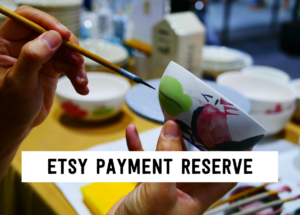
There has been a lot of talk in the Etsy community — and I mean A LOT of talk — about Etsy’s payment account reserve
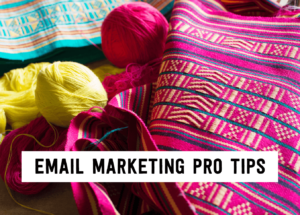
Anyone who knows me knows that I am a HUGE advocate for using email marketing to grow and scale your handmade business. But you may
disclaimer
subscribe to youtube
THE LAUNCHPAD
get in touch
We acknowledge and give thanks to the Budawang and Yuin people, the Traditional Owners of the land we work and live on. We pay our respects to all Aboriginal and Torres Strait Islander Peoples and elders past, present and emerging.



Get Instant Access to
The FULL Resource library

Get Instant Access to
The Makers Roadmap

grab this free
social media planner